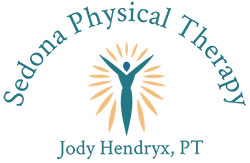Many pregnant and postpartum women experience a space in the middle of their belly where their abdominals used to meet. This generally happens around the third trimester of pregnancy. Stretching and thinning of the abdominal muscles is a natural occurrence during pregnancy due to the growing baby inside the uterus and is called a Diastasis Recti Abdominis (DRA). A DRA can go from very small to extremely large. The rectis abdominis muscles extend from the bottom of the sternum, all the way down to the symphysis pubis. The left and right sides of the rectis abdominis meet in the middle and connect to a connective tissue structure called the linea alba. The linea alba plays an important role of maintaining the integrity of the abdominal wall.
 Some studies have suggested that up to 66% of pregnant women have a significant DRA by the end of their pregnancy. Several studies have shown that a DRA does not return to normal values after pregnancy and as high as 36% of women will still have a significant DRA persisting at their 12 month follow up. A persisting DRA will cause an increased risk and impaired tension of the abdominal muscles. It can also be a precursor for problems later in life such as pelvic floor dysfunction, pelvic organ prolapse and urinary and fecal incontinence.
Some studies have suggested that up to 66% of pregnant women have a significant DRA by the end of their pregnancy. Several studies have shown that a DRA does not return to normal values after pregnancy and as high as 36% of women will still have a significant DRA persisting at their 12 month follow up. A persisting DRA will cause an increased risk and impaired tension of the abdominal muscles. It can also be a precursor for problems later in life such as pelvic floor dysfunction, pelvic organ prolapse and urinary and fecal incontinence.
Skilled Myofascial Treatment can not only help eliminate the DRA, but it will also help stabilize the abdominals and lumbar spine and prevent pain and dysfunction.
A skilled therapist can identify a DRA and classify it’s severity. Patient education is very important and geared to the following goals:
*Teaching the patient to avoid activities that may further separate the abdominal muscles.
*Teaching proper body mechanics and posture to prevent excessive pressure during functional activities.
*Teaching optimal muscle activation for functional activities- such as rolling over, going from sit to stand and lifting activities.
*Self bracing to approximate the recti muscles to reduce abdominal pressure during coughing, laughing, sneezing.
 What is the role of a skilled Myofascial Therapist in treating postpartum women with DRA? First and foremost, helping to balance the pelvis and trunk musculature so that muscles can be activated correctly. Therapeutic exercises are added which are designed to isolate and retrain the deep postural stabilizers such as the transverse abdominis and pelvic floor muscles. Additional therapeutic exercises to strengthen hip and trunk musculature are also included to help restore the abdominal wall integrity.
What is the role of a skilled Myofascial Therapist in treating postpartum women with DRA? First and foremost, helping to balance the pelvis and trunk musculature so that muscles can be activated correctly. Therapeutic exercises are added which are designed to isolate and retrain the deep postural stabilizers such as the transverse abdominis and pelvic floor muscles. Additional therapeutic exercises to strengthen hip and trunk musculature are also included to help restore the abdominal wall integrity.
A DRA uncorrected can lead to surgery. This can be avoided with proper education and treatment. A DRA can cause sharp, fleeting or burning abdominal pain during bending, lifting, standing and walking activities. It can limit the mom’s ability to hold and nurse the baby without pain as well as so many of the activities that are required of a mom with a new baby. Even common activities such as holding and lifting the baby out of a crib could be hampered by pain caused by a DRA.
All postpartum women should consider an assessment by a skilled Myofascial therapist who is trained to identify and treat pelvic imbalances. Hands On-Austin and Verde Valley Myofascial Release have expert level manual therapists specializing in Myofascial Release and functional movement correction. They are trained to identify spinal and pelvic imbalances and have the tools to correct and retrain muscles for optimal function. What do you have to lose….except for pain and dysfunction?
Jody Hendryx, PT
